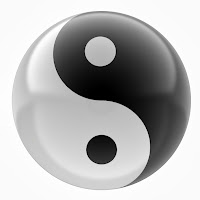 When I first heard the
term I didn’t know what to think of it. If your background is natural science
you know that MOMENTUM is the product of
the mass and velocity of an object and that
the net FORCE acting upon an object is equal to the rate at which its momentum
changes with time. You’ve also learned that POWER is equivalent to an amount of energy consumed per time unit.
When I first heard the
term I didn’t know what to think of it. If your background is natural science
you know that MOMENTUM is the product of
the mass and velocity of an object and that
the net FORCE acting upon an object is equal to the rate at which its momentum
changes with time. You’ve also learned that POWER is equivalent to an amount of energy consumed per time unit.
If everything is already
explained by physics, what now with this Fajin?
Let’s see what Fajin is
and then how a person could practice and achieve this skill in Tai Chi
practice.
In Chinese, the
character ‘Fa’ literally means ‘to issue’, ‘to discharge’, ‘to send out’,
whereas ‘Jin’ is a little more difficult to translate. Dictionary term is
‘strength / force’ but does not fully express the correct difference between
‘strength’ in Chinese ‘Li’ and ‘Jin’ in Tai Chi. The best description between
‘Li’ and ‘Jin’ is that the latter is generated by the whole body and is able to
permeate the four limbs while the first is bogged down in the shoulder and the
back.
Difficult to
understand?
For me it was. So let
me give you some hints.
In Tai Chi classic The song of Thirteen Postures it is said:
“To store the Jin is like pulling open a
bow, to issue the Jin (with Fajin) is like letting the arrow fly”. “The
root of Fajin lies in the feet and is issued from the feet, controlled by the
waist and transmitted to finger tips.”
Still having trouble
understanding?
















